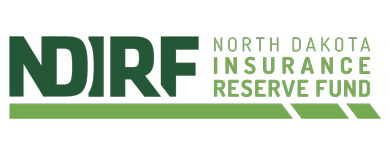The Rise of Continuous Feedback, a Complement to the Annual Performance Review
“I actually look forward to performance reviews. I did the youth beauty pageant circuit, and I enjoyed that quite a bit. I really enjoy being judged. I believe I hold up very well to even severe scrutiny.” – Angela Kinsey as Angela Martin from The Office sitcom.
The scene then cuts to her boss yelling, “Angela, you were totally satisfactory this year,” as he dashes out his office door on a “SQUIRREL!” mission. The camera glances at Angela whose expression is one of utter disappointment.
Many people in today’s workforce may not share Angela’s sentiment regarding performance reviews, specifically the enjoyment of being judged. But employee hesitancy toward annual performance reviews could also stem from a lack of feedback throughout the year from their supervisor.
To better support their employees and strengthen supervisor-employee relationships, many organizations today have implemented continuous feedback. This type of feedback requires supervisors to share “regular, constructive feedback at work through a series of ongoing and structured conversations” (www.Betterworks.com, accessed Oct. 5, 2023) with their employees.
In their book The Leadership Challenge, Kouzes and Posner explain employees’ “motivation to perform a task increases only when they have a challenging goal and receive feedback on their progress” (Kouzes and Posner, The Leadership Challenge – Sixth Edition, 2017). One of the examples they provide is a study in which “researchers told people that their efforts would be compared with how well hundreds of others had done on the same task. They subsequently received praise, criticism, or no feedback on their performance. Those who heard nothing about how well they did suffered as great a blow to their self-confidence as those criticized. Only those who received positive feedback improved their performance” (Kouzes and Posner, The Leadership Challenge – Sixth Edition, 2017).
Kouzes and Posner elaborate further about how this study demonstrates the importance of continuous feedback as a tool to improve and encourage employee learning and self-confidence which enables them to better self-correct.
“Encouragement is more personal and positive than other forms of feedback, and it’s more likely to accomplish something that other forms cannot: strengthening trust between leaders and their constituents” (The Kouzes and Posner, The Leadership Challenge – Sixth Edition, 2017).
Wagner and Harter, authors of 12: The Elements of Great Managing refer to continuous feedback as direct coaching and cite “talking about progress” as one of the 12 elements or aspects of work as “most powerful in explaining workers’ productive motivations on the job” (Wagner and Harter, 12: The Elements of Great Managing, 2006). Holding on to feedback for an entire year and providing it as a list during an annual performance review doesn’t make the same impression on employees as compared to the intense power of receiving regular, insightful, personal feedback (Wagner and Harter, 12: The Elements of Great Managing, 2006).
So, what role does an annual performance review take if your entity already practices continuous feedback? According to Christopher D. Lee, SHRM-SCP and author of the article Don’t Confuse Feedback with a Performance Review (SHRM.org), feedback provides information and is an immediate, ongoing activity, usually verbal, and perceived as neutral. Appraisal provides a judgment or evaluation, is retrospective and event-based, usually occurs at designated intervals and is often linked to pay or other rewards, may cause fear and other emotional reactions, and is written or documented (SHRM.org, accessed Oct. 6, 2023).
Lee acknowledges feedback and performance evaluations have their place – documentation maintains records of past performance and expected performance – he credits feedback to being foundational for building leader-employee trust.
Leader-employee trust “makes it easter to discuss and deal with real issues when they occur…Performance interventions must give the employee enough information about improvement points and the right amount of support to change them. Improved performance only occurs through proper coaching, guidance, training and employee support.”
For More Information About Performance Reviews
The HR Collaborative cites performance evaluation examples in Chapter 5: Performance Management of its HR Reference Guide for Local Government. The guide is available for all North Dakota local government entities to access here: HRNDGov.org>Resources>Reference Guide.
If you have further questions about continuous feedback or performance reviews, please reach out to the HR Collaborative at HRCollab@ndirf.com.
Sources:
- Larralde, Alex. A Practical Guide to Continuous Feedback at Work. www.Betterworks.com. (Accessed Oct. 5, 2023).
- Kouzes, James M., & Posner, Barry Z. The Leadership Challenge: Sixth Edition. (2017).
- Wagner, Rodd, & Harter, James K. 12: The Elements of Great Managing. (2006).
- Lee, Christoper D., Don’t Confuse Feedback with a Performance Appraisal. SHRM.org. (Accessed Oct. 6, 2023).






